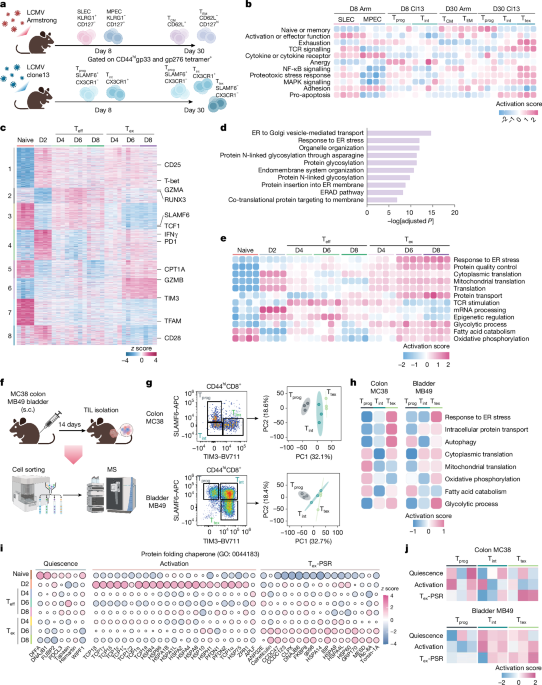
"T cell exhaustion represents a hypofunctional state characterized by reduced effector function and increased inhibitory receptor expression that arises from persistent antigen exposure and a hostile microenvironment7. T ex cells observed in cancer fail to eliminate malignant cells, and this limitation mediates a key mechanism of resistance to immunotherapies1,2,3. The exhaustion program generates a heterogeneous T ex cell population. Progenitor T ex (T prog) cells retain stemness and self-renewal capacity that respond to immune checkpoint blockade (ICB) therapies and differentiate into intermediate T (T int) cells with"
"Although transcriptomic profiling has provided insights into T ex cell biology, mRNA abundance is not always a faithful proxy of protein expression across various organisms18,19,20,21,22. Previous studies have revealed poor mRNA-protein correlation in T cells regardless of functional status23,24,25 and the importance of post-transcriptional regulation in T cell differentiation and function26. In this context, a high-resolution proteomic map of T ex cells would be valuable."
T cell exhaustion is a hypofunctional state with reduced effector function and increased inhibitory receptor expression resulting from persistent antigen exposure and a hostile microenvironment. Exhaustion produces heterogeneous populations including progenitor (Tprog), intermediate (Tint), and terminal (Ttex) cells with differing responses to immune checkpoint blockade and cytolytic capacity. T cell exhaustion limits immunotherapy and CAR T effectiveness against solid tumors. mRNA abundance often poorly predicts protein expression in T cells, necessitating a high-resolution proteomic map. Proteomic profiling across in vitro exhaustion, chronic LCMV infection, and colon and bladder tumor models identifies pathway-specific transcript–protein discordance and protein-level regulatory layers specific to exhausted T cells, including a PSR.
Read at Nature
Unable to calculate read time
Collection
[
|
...
]